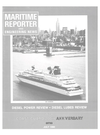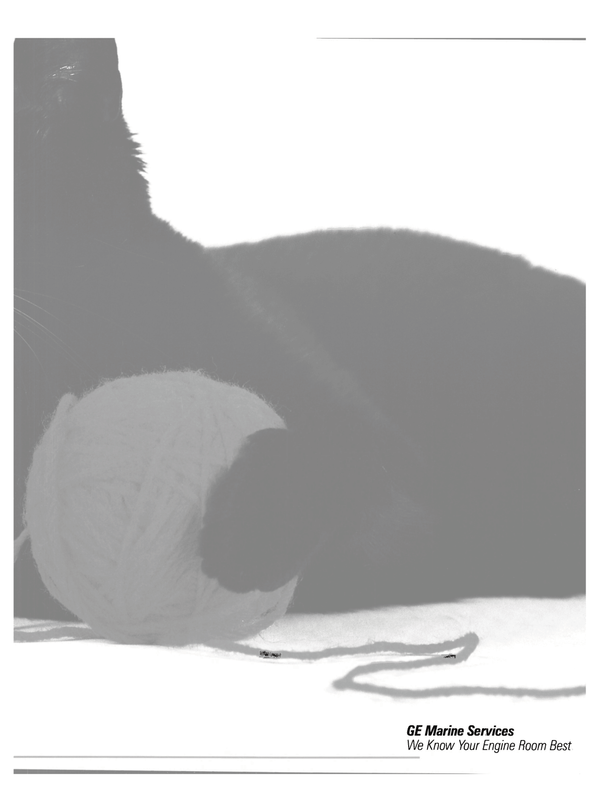
New Navy Report Outlines Potential Submarine Threat From Third World Nations
A new U.S. Navy report, "Antisubmarine Warfare: Meeting the Challenge," outlines what it calls the emergence of "a significant ASW problem" from Third World and nonaligned nations with submarine forces. The report, therefore, represents a major shift from the Navy's almost exclusive focus on the Soviet threat.
According to the 72-page report, the availability of modern dieselelectric submarines combined with the latest in torpedo and cruise missile technology make the submarine forces of Third World and nonaligned nations an increasingly more potent threat.
Of the two dozen countries cited in the report, only China and India have nuclear-powered submarines among their forces. The rest of forces of the Third World and nonaligned nations outlined are composed of diesel-electric submarines, some of which are the new air-independent propulsion type.
The emergence of modern, relatively inexpensive, air-independent propulsion technology has turned diesel-electric submarines into true submersibles.
The report states, "Able to stay submerged for extended periods, using these new propulsion systems to recharge their batteries without noisy snorkel operations, hybrid-diesel submarines equipped with modern cruise missiles and torpedoes are a significant ASW problem. The availability of this technology to Third World and nonaligned nations will make ASW a major consideration in future low-level regional conflicts." Because of the ready availability of these quiet submarines, as well as the existence of quieter Soviet submarines, the Navy report stresses the need for the development and funding of various Antisubmarine Warfare (ASW) programs in the years ahead in order to maintain an edge in underwater surveillance operations.
Among the ASW programs cited by the report for continued support include: advanced underwater vehicles for submarines, improvement of SQQ-89 sonar for surface ships, refinement of bi-static and multi-static active sonar systems for surface ships, advanced active and passive sonobuoys for patrol aircraft, upgrade of the mobile passive sonar system, and deployment of a fixed active system.
Some of the newest class of ASW platforms in the U.S. include the Arleigh Burke Class (DDG-51) Aegis destroyer, the improved version of the Los Angeles Class (SSN-688) attack submarine, the new Seawolf Class (SSN-21) submarine, and the Small Waterplane Area, Twin-Hull (SWATH) T-AGOS ocean surveillance ship with the Surveillance Towed Array Sensor System (SURTASS).
Read New Navy Report Outlines Potential Submarine Threat From Third World Nations in Pdf, Flash or Html5 edition of July 1990 Maritime Reporter
Other stories from July 1990 issue
Content
- Wartsila Diesel Announces Executive Appointments page: 10
- Chandris Celebrity's 'Horizon/ Built By Meyer Werft, Makes Her New York Debut page: 11
- Furuno Introduces New Autopilot, Compact, Lightweight Gyrocompass, And 10-Inch Color Video Sounder page: 11
- Radio Holland's Datamation: A Complete Integrated Ship Management System page: 13
- McDermott Awarded $27-Million Exxon Contract For Offshore Platform page: 13
- Avondale To Bid On Construction Of World's Largest Passenger Ship page: 14
- Singmarine Wins $16 Million Contract For New Chemical Tanker page: 15
- Hamilton Introduces Advanced Water Jet For Wide Range Of Vessels page: 16
- Halter Marine To Convert Supply Vessel For EPA Under $4.2-Million Pact page: 18
- Magnavox Introduces New Integrated GPS/Transit Satellite Navigation System page: 18
- Leevac Shipyards A w a r d ed Supply Boat Contract page: 19
- DIESEL POWER REVIEW page: 20
- MARINE LUBRICANTS page: 28
- U.S. Coast Guard Celebrates 200 Years Of Service page: 33
- Our Third Century page: 34
- Overview Of Coast Guard's Fiscal Year 1991 Request page: 36
- Willard Marine Continues Work With U.S. Coast Guard; Introduces SOLAS-Approved 18-Foot RIB page: 42
- Bollinger Receives $73.4-Million Modification To Build USCG Patrol Boats page: 42
- Morgan Crane Receives Order For Knucklebooms For Three Corvettes page: 43
- New Navy Report Outlines Potential Submarine Threat From Third World Nations page: 44
- US Navy Homeports Select Seaward Marine Fenders page: 44
- NORSHIPCO Completes Conversion of Crane Ship (T-ACS 9) For Navy page: 45
- Tano Marine Named Single System Vendor For T-AGS 45 page: 45
- Marinette Marine Launches Its Third MCM Vessel USS Patriot (MCM-7) page: 46
- Essex Machine Works Delivers New Steel Propeller Shafts For Coast Guard's 'Eagle' page: 48
- Viking Seminar Updates Skills of Service Representatives page: 48
- Global Marine Group Changes Company Name To GMG Systems, Inc. page: 53
- Robert Allan-Designed Hydrographic Survey Vessel Delivered By Allied Shipbuilders page: 54
- Aluminum Boats Constructing 140-Foot Dinner Yacht For Chicago page: 54
- Bender Awarded $3-Million Contract For Drill Rig Repair page: 55
- Cummins Diesels Power Cruise Vessel 'America' Delivered By Marine Builders page: 56
- ZF Introduces New Series Of Economical High-Horsepower Marine Transmissions page: 56
- $13-Million, Five-Boat Contract Completed By Moss Point Marine With Delivery Of Tugs To Jordan page: 58
- Deutz MWM Diesels To Power Four Harbor Tugs For Mexico page: 58
- Atlantic Marine Awarded $12.6-Million Contract To Build Three Sternwheel Dinner Vessels page: 59
- ABB Marine To Supply $50-Million Power Package To Fincantieri page: 59
- Blount Marine Delivers 192-Foot Dinner/Excursion Boat M / V Spirit Of Boston page: 60
- Canadian Government Report And New U.S. NOAA Administrator Publish Strong Swath Endorsements page: 61
- Master Marine Completes Repair, Maintenance On USCG Island Class Patrol Boats page: 62
- Trinity Marine To Build Three 220-Foot Supply Boats Under $15-Million Contract page: 62
- MTU-Powered High-Speed Catamaran, Built To New Flying Cat Design, Delivered By Kvaerner Fjellstrand page: 63
- COMSAT Expands Its Mobile Communications To New Ocean Region page: 63
- New Paint Factory For Sigma In Amsterdam page: 64
- Allied-Signal 'Spectra Shield' Panels For Marine Vessels Offer Maximum Ballistic Protection page: 64
- Textron Marine Systems Wins $6.5-Million Contract To Build Two SES Fireboats page: 65
- Congressional Conferees Near Compromise On Double-Hull Tanker Phase-In page: 66
- New Literature Available On Coffin Mechanical Seals For Turbo Pumps page: 67
- ABB Offers Eight-Page, Full-Color Brochure On Turbochargers page: 68
- Marco Shipyard Christens Fourth North Pacific Freezer Longliner page: 68
- Versatile Pacific Shipyards Uses N e w Launching Technique For Hydrographic Survey Ship page: 69
- L&C Associates Completes Deactivation Of M / V Cape Inscription page: 70


